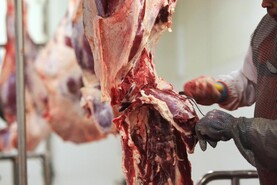When farm manager Iarlaith Collins rehoused a small batch of cows and calves that were turned outdoors for a few days in the first week of February, he did not think it would be late March before they would get back outdoors.
Adverse weather and difficult ground conditions have left the last few weeks challenging, but, thankfully, the grazing season starting in earnest in the last week has brought this to a conclusion.
Released outdoors
Eighty cows and 80 calves were released outdoors last weekend in three grazing groups, with animals remaining in the same batches as they were housed.
Ground conditions ... have been relatively good and improving quickly since midweek
There were also 46 yearling steers turned outdoors, while this was followed by 61 yearling heifers on Tuesday.
Iarlaith says that ground conditions were tricky at the start of the week and after some rain on Wednesday, but that, in general, they have been relatively good and improving quickly since midweek.
He is balancing between grazing swards down tight and moving on animals if there is a risk of damage to swards.
Heavy covers
There are quite heavy covers on some areas and utilisation is being helped by splitting paddocks with a temporary electric fence.
The aim is to get the grazing rotation back on track as soon as possible.
The target closing date for silage is 10 April, but this will be reviewed approaching this date and may be extended for a few days if needed.
Grass growth rates have been recorded by Michael Fagan of Teagasc at a range of 18kg DM/ha to 28kg DM/ha in the last week.
They may not increase in line with what would be expected for the time of year in the next week if a forecasted drop in nighttime temperatures and lower daytime temperatures materialise.






 This is a subscriber-only article
This is a subscriber-only article










SHARING OPTIONS: